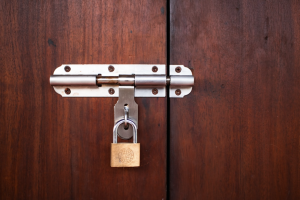What Happens When Emotional Burnout Becomes a Household Crisis

Ever cried in your car or slammed the fridge because no one did the dishes? Burnout doesn’t always explode. It hides in silence, short tempers, and tired routines. Most think it starts at work, but it’s showing up at home—pulling families apart in slow, quiet ways. Emotional exhaustion spreads fast, draining parents, isolating teens, and leaving partners too worn out to connect. It’s a growing crisis, and when one person crashes, the whole house feels it.
In this blog, we will share how burnout turns private stress into a shared household problem, what signs to watch for, and how professional support can help prevent lasting damage.
The Shift from Individual Burnout to Group Strain
Burnout rarely stays contained. It leaks. What starts as one person’s exhaustion becomes a shared problem. The parent who comes home too drained to connect. The partner who avoids conversation. The teen who isolates in their room, headphones always on.
The symptoms may look like laziness or attitude, but they’re often stress in disguise. That stress may come from work, school, caregiving, or financial pressure. But once it hits the home, it changes shape. It becomes missed communication, tense dinners, passive-aggressive silence, or shouting over small things.
This kind of emotional burnout doesn’t just affect mood. It impacts how people relate to each other. It blocks empathy. It shrinks patience. It makes every minor conflict feel bigger than it is.
Over time, this creates patterns that are hard to break. The household stops working like a team. People retreat instead of reaching out. And that’s when it becomes a true crisis—when the family system itself starts to fail.
Professionals trained through MFT accredited programs understand how burnout affects not just individuals, but the dynamics between them. MFT stands for Marriage and Family Therapy, a field focused on helping people navigate relational and emotional challenges as a unit. These therapists are trained to spot harmful patterns, defuse tension, and rebuild connection through practical, real-life strategies. They’re not just treating symptoms. They’re helping the whole household function better.
The Pandemic Didn’t Start It, But It Supercharged It
Burnout didn’t show up during COVID, but the pandemic definitely put it in fast forward. Suddenly, home wasn’t a break from stress. It was the center of it. School, work, chores, emotional labor—all under one roof, all the time.
The line between professional and personal disappeared. Parents became teachers. Living rooms became conference rooms. Couples who were used to eight hours apart now had zero escape. It was like trying to breathe through a straw—possible at first, then exhausting.
Even now, long after lockdowns, the effects linger. People are still catching up emotionally. Many families are functioning in survival mode, pushing through without realizing how frayed they’ve become. That’s when burnout gets dangerous—when it starts to feel normal.
And let’s be honest: society still treats emotional exhaustion as a personal failure. You’re supposed to tough it out. Take a walk. Drink more water. But burnout isn't a hydration problem. It’s a relational one. When people feel disconnected, unsupported, or constantly overwhelmed, they don’t need reminders to do yoga. They need someone who can help them rebuild communication and connection.
Signs It’s More Than Just a Rough Week
Most families miss the signs of burnout until they’re dealing with blowups or breakdowns. But there are early red flags if you know what to look for.
One major sign is emotional withdrawal. This can look like someone who used to talk about their day but now just shrugs. Or a teen who used to be chatty but now gives one-word answers.
Another red flag is chronic irritability. Little things trigger big reactions. A forgotten text. Dishes left out. The tone of voice. Everything becomes a spark, even when there’s no fire.
You might also notice constant fatigue that sleep doesn’t fix. Not just tired at the end of a workday, but tired in the bones. Like life is too loud, too demanding, and no break feels long enough.
Finally, you’ll often see a breakdown in problem-solving. The family avoids discussing difficult topics. Chores go undone. Finances stay unaddressed. Instead of teamwork, everyone’s just managing their own little corner, hoping the walls don’t fall in.
These signs don’t always scream for help. But they quietly signal that something deeper needs attention.
When Support Can’t Wait Any Longer
Getting help isn’t about admitting failure. It’s about deciding that your relationships matter more than your pride. Too many families wait until things are falling apart to look for support. By then, hurt has built up. Walls are higher. Repair takes longer.
Therapists trained in relational systems offer a unique kind of support. They look at the whole picture—how stress travels from one person to another, how conflict patterns form, and what keeps communication from landing the way it should.
They also know how to move at the pace a family can handle. That means breaking issues down, creating space for honest conversation, and helping people reconnect without judgment.
The Real Cost of Doing Nothing
Ignoring burnout doesn’t make it go away. It makes it harder to fix later.
Left alone, burnout can affect mental and physical health. It increases the risk of anxiety, depression, and chronic illness. It also impacts children, who often mirror the emotional tone of the adults around them. When they grow up in high-stress homes, they may carry those same patterns into their own lives.
It also erodes trust. When people feel unsupported for too long, they stop believing the household can meet their needs. That leads to emotional distance, isolation, and eventually, resentment.
Small Steps Toward Recovery
The good news? Burnout doesn’t have to be permanent. Homes recover when people stop pushing through and start reaching out.
It starts with honesty. Naming what’s hard. Owning what’s not working. From there, it’s about making small changes—setting boundaries, adjusting expectations, building better routines.
Even simple habits make a difference. Weekly check-ins where everyone shares what’s working and what’s not. Splitting emotional labor more evenly. Making room for rest that’s not just sleep, but real mental downtime.
And when the stress runs deeper than routines can fix, that’s the time to get help. Families don’t need to suffer in silence. Trained professionals exist for this exact reason: to bring clarity to the chaos, calm to the tension, and repair to the damage burnout leaves behind.
No household runs perfectly. But every household deserves the chance to function with care, support, and balance—even when life gets heavy. Especially then.






